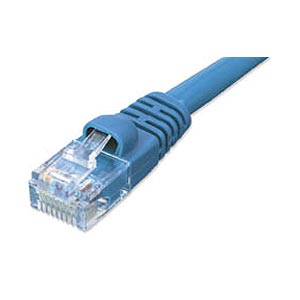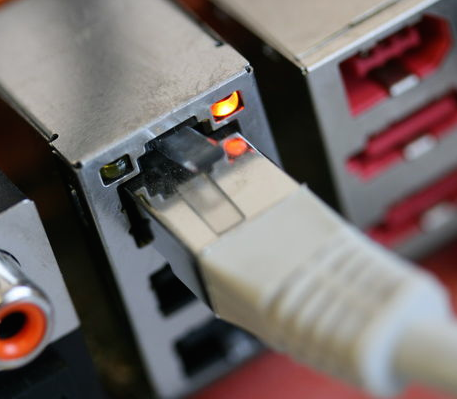Author Archives: networkingnerd
Author Archives: networkingnerd

With the advent of software defined networking (SDN) and the move to incorporate automation, orchestration, and extensive programmability into modern network design, it could easily be argued that programming is a must-have skill. Many networking professionals are asking themselves if it’s time to pick up Python, Ruby or some other language to create programs in the network. But is it a necessity?
The move toward using API interfaces is one of the more striking aspects of SDN that has been picked up quickly. Instead of forcing information to be input via CLI or information to be collected from the network via scraping the same CLI, APIs have unlocked more power than we ever imagined. RESTful APIs have giving nascent programmers the ability to query devices and push configurations without the need to learn cumbersome syntax. The ability to grab this information and feed it to a network management system and analytics platform has extended the capabilites of the systems that support these architectures.
The syntaxes that power these new APIs aren’t the copyrighted CLIs that networking professionals spend their waking hours memorizing in excruciating detail. JUNOS and Cisco’s “standard” CLI are as much relics of the Continue reading

There’s a lot of work that’s been done recently to bring the CCIE up to modern network standards. Yusuf and his team are working hard to incorporate new concepts into the written exam. Candidates are broadening their horizons and picking up new ideas as they learn about industry stalwarts like OSPF and spanning tree. But the biggest challenge out there is incorporating the ideas behind software defined networking (SDN) into the exam. I don’t believe that this will ever happen. Here’s why.
If you look at the CCIE and what it’s really testing, the exam is really about troubleshooting and existing network integration. The CCIE introduces and tests on concepts like link aggregation, routing protocol redistribution, and network service implementation. These are things that professionals are expected to do when they walk in the door, either as a consultant or as someone advising on the incorporation of a new network.
The CCIE doesn’t deal with the design of a network from the ground up. It doesn’t task someone with coming up with the implementation of a greenfield network from scratch. The CCIE exam, especially the lab component, only tests a candidate on their ability to work Continue reading

Systems are inherently reliable. Until they aren’t. On a long enough timeline, even the most reliable system will eventually fail. How you manage that failure says a lot about the way your build your system or application. So, why is it then that we’re so focused on failing?
No system is infallible. Networks go down. Cloud services get knocked offline. Even Facebook, which represents “the Internet” for a large number of people, has days when it’s unreachable. When we examine these outages, we often find issues at the core of the system that cause services to be unreachable. In the most recent case of Amazon’s cloud system, it was a typo in a script that executed faster than it could be stopped.
It could also be a failure of the system to anticipate increased loads when minor failures happen. If systems aren’t built to take on additional load when the worst happens, you’re going to see bigger outages. That is a particular thorn in the side of large cloud providers like Amazon and Google. It’s also something that network architects need to be aware of when building redundant pathways to handle problems.
Take, for example, Continue reading

Words mean things! — Justin Warren (@JPWarren)
As a reader of my blog, you know that words are my tradecraft. Picking the right word to describe a topic or a technical idea is very important. Using incorrect grammar can cause misunderstandings and lead to issues later on. You’re probably all familiar with my dissection of the Premise vs. Premises issue in IT, but today’s post is all about interrogatives.
One would think that the basic question is something that doesn’t need to be explained. It is one of the four basic types of sentences that we learn in grade school. It’s the easiest one of the bunch to pick out because it ends in a question mark. Other languages, like Japanese, have similar signals for making a statement into an interrogative declaration.
Asking a question is important because it allows us to understand our world. We learn when we ask questions. We grow as people and as professionals. Kids learn to question everything around them at an early age to figure out how the world works. Questions are a cornerstone of society.
However, how do you come up with question? In what manner Continue reading

Networking is done. The way you have done things before is finished. The writing has been on the wall for quite a while now. But it’s going to be a good thing.
Networking purchase models look much different today than they have in the past. Enterprises no long buy a switch or a router. Instead, they buy solution packages. The minimum purchase unit is a networking pod or rack. Perhaps your proof-of-concept minimum is a leaf-spine of no less than 3 switches. Firewalls are purchased in pairs. Nowhere in networking is something simple any longer.
With the advent of software, even the deployment of these devices is different. Automation and orchestration systems provide provisioning as the devices are brought online. Network Monitoring Systems ensure the devices are operating correctly via API call instead of relying on SNMP. Analytics and telemetry systems can pull statistics on the fly and create datasets that give you insight into all manner of network traffic. The intelligence built into the platform supporting the hardware is more apparent than ever before.
Networking is no longer about fast connectivity speed. Instead, networking is about stability. Providing a transport network that stays healthy instead of Continue reading

In CCIE news this week, Cisco has raised the price of their exams across the board. The CCNA has moved up to $325, and the CCIE Written moves from $400 to $450. It goes without saying that there is quite a bit of outcry in the community. Why is the price of the CCIE Written exam surging so high?
The most obvious answer is that the amount of work going in to development of the exam has increased. The number of people working behind the scenes to create a better exam has caused the amount of outlay to go up, hence the need to recover those costs. This is the simplest explanation of all the cost increases.
As Cisco pours more and more technology into the tests, the amount of hands and fingers touching them has gone down. At the same time, the quality of the eyeballs that do look at the exam has gone up. It’s a lot like going to a specialist doctor. The quality of the care you receive for your condition is high, but the costs associated with that doctor are higher than a regular general practice doctor. Cisco’s Continue reading

It started somewhat innocently. Cisco released a field notice that there was an issue with some signal clocks on a range of their networking devices. This by itself was a huge issue. There had been rumblings about this issue for a few months. Some proactive replacement of affected devices to test things. Followed by panicked customer visits when the news broke on February 2nd. Cisco looked like they were about to get a black eye.
The big question that arose was whether or not this issue was specific to Cisco devices or if it was an issue that was much bigger. Some investigative work from enterprising folks like Tony Mattke (@tonhe) found that there was a spec document from Intel that listed a specific issue with the Intel Atom C2000 System on Chip (SoC) that caused it to fail to provide clock signal for onboard chips. The more digging that was done, the more dire this issue turned out to be.
Clock signaling is very important in modern electronics. It ensures that all the chips on the board are using the correct timing to process electronic impulses. If the clock signal starts drifting, you start Continue reading

Wireless is hard. When you’re putting together large deployments of access points in challenging environments with tons of security on top of it all you realize the difficulty. That’s why most major wireless deployments require a lot of time, planning, and documentation to pull off correctly. But what if things are on the small side?
The average small business (SMB) is stuck in a wireless limbo. They have requirements that far exceed the performance profile of standard consumer wireless devices. Most SMBs have more than three or four devices connecting at a time. They have reliability issues that need to be dealt with. And they need it all in a package that doesn’t need constant minding to work appropriately.
When you look at the market for consumer wireless today, the real push is to get rid of any configuration at all. Even the old Apple Airport, which was simplistic in its day, is too “complicate” for modern users. Solutions like Google Wifi aim to be the kind of solution that just requires a cable plugged in. No additional configuration beyond that. Which works wonders if you’re a consumer at home that needs to enable some Continue reading

SD-WAN has finally arrived. We’re not longer talking about it in terms of whether or not it is a thing that’s going to happen, but a thing that will happen provided the budgets are right. But while the concept of SD-WAN is certain, one must start to wonder about what’s going to happen to the providers of SD-WAN services.
I’ve written a lot about SDN and SD-WAN. SD-WAN is the best example of how SDN should be marketed to people. Instead of talking about features like APIs, orchestration, and programmability, you need to focus on the right hook. Do you see a food processor by talking about how many attachments it has? Or do you sell a Swiss Army knife by talking about all the crazy screwdrivers it holds? Or do you simply boil it down to “This thing makes your life easier”?
The most successful companies have made the “easier” pitch the way forward. Throwing a kitchen sink at people doesn’t make them buy a whole kitchen. But showing them how easy and automated you can make installation and management will sell boxes by the truckload. You have to appeal the opposite nature that Continue reading
Making ASICs is a tough task. We learned this last year at Cisco Live Berlin from this conversation with Dave Zacks:
Cisco spent 6 years building the UADP ASIC that powers their next generation switches. They solved a lot of the issues with ASIC design and re-spins by creating some programmability in the development process.
Now, watch this video from Nick McKeown at Barefoot Networks:
Nick says many of the same things that Dave said in his video. But Nick and Barefoot took a totally different approach from Cisco. Instead of creating programmable elements in the ASIC design, then abstracted the entire language of function definition from the ASIC. By using P4 as the high level language and making the system compile the instruction sets down to run in the ASIC, they reduced the complexity, increased the speed, and managed to make the system flexible and capable of implementing new technologies even after the ASIC design is set in stone.
Oh, and they managed to do it in 3 years.
Sometimes, you have to think outside the box in order to come up with some new ideas. Even if that means you have to pull everything out of the box. Continue reading

By now, you may have seen some bit of drama in the VMUG community around the apparent policy change that disqualified some VMUG leaders based on their employer. Eric Shanks (@Eric_Shanks) did a great job of covering it on his blog as did Matt Crape (@MattThatITGuy)with his post. While the VMUG situation has its own unique aspects, the question for me boils down to something simple: How do you remove people from an external community?
Removing unauthorized people from a community is nothing new under the sun. I was a Cisco Champion once upon a time. During the program’s second year I participated in briefings and events with the rest of the group, including my good friend Amy Arnold (@AmyEngineer). When the time came to reapply to the program for Year 3, I declined to apply again for my own reasons. Amy, however, was told that she couldn’t reapply. She and several other folks in the program were being disqualified for “reasons”. It actually took us a while to figure out why, and the answer still wasn’t 100% clear. To this day the best we can figure out is that Continue reading

Blogging isn’t starting off to a good 2017 so far. Ev Williams announced that Medium is cutting back and trying to find new ways to engage readers. The platform of blogging is scaling back as clickbait headlines and other new forms of media capture the collective attention for the next six seconds. How does that all relate to the humble tech blogger?
One of the reasons why things have gotten so crazy is the drive for page views. Clickbait headlines serve the singular purpose of getting someone to click on an article to register a page view. Ever clicked on some Top Ten article only to find that it’s actually a series of 10 pages in a slideshow format? Page views. I’ve even gone so far as to see an article of top 7 somethings broken down into 33(!) pages, each with 19 ads and about 14 words.
Writers competing for eyeballs are always going to lose in the end. Because the attention span of the average human doesn’t dally long enough to make a difference. Think of yourself in a crowded room. Your eyes dart back and forth and all around trying to find something Continue reading

It’s time once again for my traditional New Year’s Day navel gazing. As per tradition with my blog, I’m not going to make prognostications about networking or IT in general. Either I’m going to wind up totally wrong or be totally right and no one will care. I rather enjoy the ride as we go along, so trying to guess what happens is kind of pointless.
Instead, I’m going to look at what I want to accomplish in the coming year. It gives me a chance to analyze what I’m doing and what I want to be working on. And it’s a whole lot easier than predicting that SDN is going to take everyone’s job or OpenFlow being dead again.
My biggest goal for 2016 was to write more. And that I did. I worked in writing any time I could. I wrote about ONUG, SD-WAN, and other fun topics. I even wrote a small book! Finding time to work all the extra typing in to my Bruce Wayne job at Tech Field Day was a bit challenging here and there. And more than once I was publishing a blog post at the deadline. But all Continue reading

One of the most common complaints about SDN that comes from entry-level networking folks is that SDN is going to take their job away. People fear what SDN represents because it has the ability to replace their everyday tasks and put them out of a job. While this is nowhere close to reality, it’s a common enough argument that I hear it very often during Q&A sessions. How is it that SDN has the ability to ruin so many jobs? And how is it that we just now have found a way to do this?
One of the biggest reasons that the automation portion of SDN has become so effective in today’s IT environment is that we can finally measure what it is that networks are supposed to be doing and how best to configure them. Think about the work that was done in the past to configure and troubleshoot networks. It’s often a very difficult task that involves a lot of intuition and guesswork. If you tried to explain to someone the best way to do things, you’d likely find yourself at a loss for words.
However, we’ve had boring, predictable standards for many years. Instead of Continue reading
I had a great time over the last month writing a series of posts with my friend John Herbert (@MrTugs) over on the SolarWinds Geek Speak Blog. You can find the first post here. John and I explored the idea that people are always blaming the network for a variety of issues that are often completely unrelated to the actual operation of the network. It was fun writing some narrative prose for once, and the feedback we got was actually pretty awesome. But I wanted to take some time to explain the rationale behind my madness. Why is it that we are always blaming the network?!?
Think about all the times you’ve been working on an application and things start slowing down. What’s the first thing you think of? If it’s a standalone app, it’s probably some kind of processing lag or memory issues. But if that app connects to any other thing, whether it be a local network or a remote network via the Internet, the first culprit is the connection between systems.
It’s not a large logical leap to make. We have to start by assuming the the people Continue reading

SD-WAN has exploded in the market. Everywhere I turn, I see companies touting their new strategy for reducing WAN complexity, encrypting data in flight, and even doing analytics on traffic to help build QoS policies and traffic shaping for critical links. The first demo I ever watched for SDN was a WAN routing demo that chose best paths based on cost and time-of-day. It was simple then, but that kind of thinking has exploded in the last 5 years. And it’s all thanks to our lovable old friend, Ethernet.
When I started in networking, my knowledge was pretty limited to switches and other layer 2 devices. I plugged in the cables, and the things all worked. As I expanded up the OSI model, I started understanding how routers worked. I knew about moving packets between different layer 3 areas and how they controlled broadcast storms. This was also around the time when layer 3 switching was becoming a big thing in the campus. How was I supposed to figure out the difference between when I should be using a big router with 2-3 interfaces versus a switch that had lots of interfaces and could route just as Continue reading

I had the chance to attend HPE Discover last week by invitation from their influencer team. I wanted to see how HPE Networking had been getting along since the acquisition of Aruba Networks last year. There have been some moves and changes, including a new partnership with Arista Networks announced in September. What follows is my analysis of HPE’s Networking portfolio after HPE Discover London and where they are headed in the future.
Recently, HPE reorganized their networking division along two different lines. The first is the Aruba brand that contains all the wireless assets along with the campus networking portfolio. This is where the campus belongs. The edge of the network is an ever-changing area where connectivity is king. Reallocating the campus assets to the capable Aruba team means that they will do the most good there.
The rest of the data center networking assets were loaded into the Data Center Infrastructure Group (DCIG). This group is headed up by Dominick Wilde and contains things like FlexFabric and Altoline. The partnership with Arista rounds out the rest of the switch portfolio. This helps HPE position their offerings across a wide range of potential clients, Continue reading

Remember OpenFlow? The hammer that was set to solve all of our vaguely nail-like problems? Remember how everything was going to be based on OpenFlow going forward and the world was going to be a better place? Or how heretics like Ivan Pepelnjak (@IOSHints) that dared to ask questions about scalability or value of application were derided and laughed at? Yeah, good times. Today, I stand here to eulogize OpenFlow, but not to bury it. And perhaps find out that OpenFlow has a much happier life after death.
OpenFlow is not that much different than Sildenafil, the active ingredient in Vigara. Both were initially developed to do something that they didn’t end up actually solving. In the case of Sildenafil, it was high blood pressure. The “side effect” of raising blood pressure in a specific body part wasn’t even realized until after the trials of the drug. The side effect because the primary focus of the medication that was eventually developed into a billion dollar industry.
In the same way, OpenFlow failed at its stated mission of replacing the forwarding plane programming method of switches. As pointed out by folks like Ivan, Continue reading

Nutanix has been lighting the hyperconverged world on fire as of late. Strong sales led to a big IPO for their stock. They are in a lot of conversations about using their solution in place of large traditional virtualization offerings that include things like blade servers or big boxes. And even coming off the recent Nutanix .NEXT conference there were some big announcements in the networking arena to help them complete their total solution. However, I think Nutanix is missing a big opportunity that’s right in front of them.
I think it’s time for Nutanix to buy Plexxi.
If you look at the Nutanix announcements around networking from .NEXT, they look very familiar to anyone in the server space. The highlights include service chaining, microsegmentation, and monitoring all accessible through an API. If this sounds an awful lot like VMware NSX, Cisco ACI, or any one of a number of new networking companies then you are in the right mode of thinking as far as Nutanix is concerned.
SDN in the server space is all about overlay networking. Segmentation of flows and service chaining are the reason why security is so hard to do in the networking space Continue reading

I’m at Networking Field Day 13 this week. You can imagine how much fun I’m having with my friends! I wanted to drop some quick thoughts on visibility for this week on you all about what we’re hearing and raise some interesting questions.
Visibility is a huge issue for companies. Seeing what’s going on is hard for people. Companies like Ixia talk about the need to avoid dropping any packets to make sure we have complete knowledge of the network. But that requires a huge amount of hardware and design. You’re always going to need traditional monitoring even when everything is using telemetry and other data models. Make sure you size things right.
Forward Networks told us that there is an increasing call for finding a way to monitor both the underlay network and the overlay network. Most overlay companies give you a way to tie into their system via API or other telemetry. However, there is no visibility into the underlay because of the event horizon. Likewise, companies like Forward Networks are focusing on the underlay with mapping technologies and modeling software but they can’t pass back through the event horizon to see into Continue reading